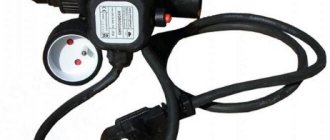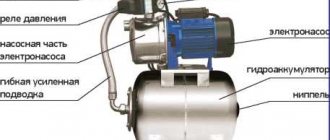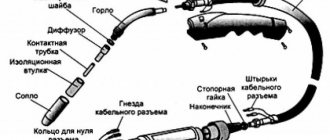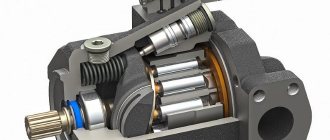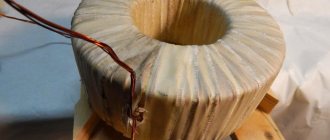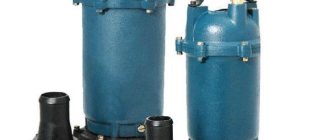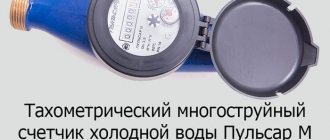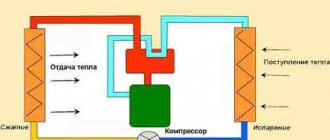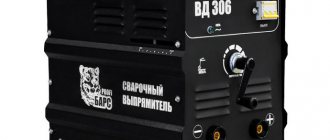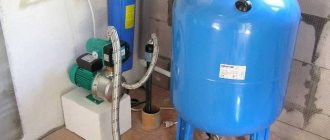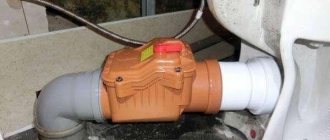An acetylene generator is a device for producing acetylene through a chemical reaction. The interaction of calcium carbide with water leads to the release of the necessary product. Currently, such devices are used in both stationary and mobile gas installations. Actually, acetylene is the main fuel in gas welding. Let's talk in more detail about what this equipment is and what its key features are.
Available technologies and equipment for acetylene production
In domestic and semi-professional conditions, acetylene can be obtained in three ways:
- When adding calcium carbide CaC2 to water: during the reaction, the amount of lump carbide decreases, and productivity depends on its quality and humidity. The method is sometimes called “dry”.
- When lump carbide is exposed to water, the productivity of acetylene production is determined by water consumption. This is the so-called “wet” method.
- By displacing the resulting gas, which itself passes the required amount of water into the reaction chamber. The method is called combined.
Although it is believed that a more modern way of producing acetylene is the joint use of two cylinders - with acetylene and oxygen - during welding and autogenous cutting, acetylene generators are quite in demand. Especially where refueling or cylinder exchange points are rare.
The classification of known designs of acetylene generators can be as follows:
- In terms of productivity, which can start from 1 m3/h for small-sized mobile devices and end with industrial-type installations producing up to 650 m3 of acetylene per hour.
- According to the acetylene pressure at the outlet. It can be up to 10 kPa for low pressure generators and up to 150 kPa for medium pressure generators. Higher pressure is not required for the burner to operate.
- In terms of mobility. The acetylene generator can be stationary or mobile. In the latter case, due to the dimensions of the device, acetylene production will be no more than 2.5...3 m3/h.
A significant limitation of all methods of chemical generation of acetylene is the high requirements for the state of the carbide, in particular, for the size of its granules, which must be in the range of 25...80 mm. Otherwise, the reaction proceeds unevenly, and the pressure of the resulting acetylene is not stable. Therefore, modern generator designs are equipped with gas reducers.
https://youtube.com/watch?v=Q0ySlpjgMAE
Advantages and limitations of acetylene generator designs
The design of the acetylene generator “Baby” is considered the best. This device is compact and provides precise consumption of flammable materials. It consistently holds the required pressure without deviations. The required pressure is set manually. According to its intended purpose, it belongs to dry-type mobile generators.
Mobile generator BAKS-1
Combined type devices are characterized by heavy slagging. With all the excellent characteristics that they show, if the slag is not detected in time, the partition will move towards the displacer. And this will lead to a loss of acetylene pressure at the outlet.
Is it possible to assemble this device on my own?
You can assemble an acetylene generator at home with your own hands. For this we will need the following materials and tools:
- The body is made of steel.
- Partition.
- Siphon.
- Carbide.
- Water.
- A device in the form of a tube in the middle of a cylinder for removing gas.
- Cutter or torch.
The main thing is to strictly follow the rules for making a cylinder. Otherwise, acetylene vapor will combine with air and a strong explosive mixture will form.
A steel cylinder is used. Using a partition, which must be placed a little lower from the center of the cylinder, divide it into 2 halves. One part of this cylinder is filled with ordinary water, and calcium carbide is poured into the other, from which acetylene gas will then be obtained. Water will flow through a dropper into the other half of the steel container and drip onto the calcium carbide. Connection with water will cause chemical. reaction. As a result, acetylene gas is formed, which flows through a specialized tube into the outlet hole, and the slag is sorted to the side.
Everything seems simple and cool. However, this is exactly what it may seem at first glance. Pressure surges should be considered. This kind of reaction is not constant. Sometimes it flows very slowly, other times it flows faster. Therefore, you can simply fly into the air, thanks to a homemade generator. Because he was not certified.
Therefore, it is recommended not to make homemade backup power plants for creating acetylene. This way you will protect yourself and those who will be with you at this time.
If you find an error, please select a piece of text and press Ctrl+Enter.
Design and operating principle of medium pressure acetylene generator ASM-1.25-3
Mobile acetylene medium pressure generators were developed by the VNIIavtogenmash Research Institute. The figure shows the structure and appearance of acetylene generators ASM-1.25-3, the operating principle of which is “water displacement”. The productivity of such generators is 1.25 m3/h, the highest gas pressure is 0.15 MPa.
The generator housing (item 1) consists of two chambers: the upper, gas-forming (item 5), and the lower, flushing (item 2). A lid (item 7) with a hole in the neck for feeding a basket with carbide (item 8) into the box (item 6) is welded to the gas-forming chamber. The basket is attached to the lid (pos. 9). The lid is hermetically attracted to the neck using a lever (pos. 11) and secured with a screw (pos. 10).
The generator is filled with water through a box. The acetylene formed as a result of the reaction passes through a tube (item 12), the lower edge of which is placed in water located in the washing chamber. Acetylene, passing through this water, is cooled and through the valve (item 4) goes into the hose (item 3) and from there, through the water seal (item 14), enters the gas cutter or burner.
A pressure gauge is mounted on the generator body and there are handles for moving. Carbide loading is 2.2 kg. The empty weight of the generator is 16 kg. The minimum operating temperature of the generator is -25°C. For operation at sub-zero temperatures, it is equipped with an insulating cover.
Operating principle of an acetylene generator - systems overview
There are several systems for ensuring the chemical reaction of components, each with its own advantages and disadvantages. Let's look at each of them in detail:
The “Carbide into Water” (CV) system - the design of an acetylene generator using such a system is quite simple. Water is poured into the body up to the inner mark, and calcium carbide is poured into a special basket. The container is sent to the generator, which is closed with a lid. Thanks to a special device, a dosed supply of the active ingredient is opened, which is poured into the water. The gas from the reaction is collected in a gas collector. The advantages of the “Carbide into water” system are the complete decomposition of carbide, as well as good cooling of the gas and its washing from foreign impurities. At the same time, the disadvantages include high water consumption - about 12 liters of water are needed for 1 kg of calcium carbide.
The “Water to Carbide” (WK) system, in turn, is divided into dry and wet options. The dry version is often used in stationary generators that produce up to 10 cubic meters of gas per hour. The generator is a drum into which calcium carbide is poured through loading hatches. After closing the hatches, the unit begins to rotate, and water is injected into the drum, the amount of which depends on the pressure in the gas collector. The advantages of such a system include simplified waste removal (slaked lime is easily removed from the drum using a special hatch) and minimization of losses that occur in other options due to the dissolution of acetylene in water. The disadvantages of such devices include overheating of acetylene and incomplete reaction of the active components. The wet version of the VK system proceeds as follows - water is poured into the housing to the required mark, and calcium carbide is poured into the retort located under the housing. When the reaction needs to start, the valve opens and water from the housing drips or pours in a thin stream onto the carbide. The resulting gas enters the gas collector through the tube, which interacts with the upper chamber - when the pressure increases, the water is pushed into the housing and the reaction stops. When the gas needs to be used, the required valve opens, the pressure in the device drops, water again has access to the retort, and the reaction resumes. The advantages of the method are its simplicity and reliability, but the disadvantages include incomplete decomposition of the component and the possibility of its overheating due to a small dosage of water; in addition, the maintenance of such a device is quite labor-intensive.
The “Water Displacement” (WW) system is designed as follows: water is poured into the housing, then the basket with the active component is lowered inside and covered with a lid. As a result of the reaction, the pressure in the device increases, and water from one cylinder enters the spare one, followed by the cessation of the reaction. As the gas from the apparatus is used, the pressure drops, the water returns to the first compartment, and the reaction begins again. What is good about the system is its reliability, but, like the previous option, the devices of such a system are difficult to maintain.
Design and principle of operation of the low-pressure acetylene generator ANV-1.25
The figure shows the internal structure of the single-station mobile acetylene generator ANV-1.25 and its appearance. The generator operates on the principle of “water on carbide”, the acetylene productivity is 1.25 m3/h, and the gas pressure does not exceed 0.01 MPa.
The generator housing (item 7) consists of two chambers: upper and lower. The upper chamber is called the water collector (pos. 6), and the lower chamber is called the gas collector (pos. 9). The chambers are separated from each other by a horizontal partition (pos. 8).
At the bottom of the gas collection chamber there is a retort (item 14), into which a basket with carbide is placed. After loading the carbide, the retort is hermetically sealed with a lid (pos. 12) with a rubber lining.
Water is supplied into the housing from above, which is supplied to the retort using a tap (item 10). When water enters the retort, it reacts with the carbide, forming acetylene, which, passing through the pipe (item 11), is collected in the gas collection chamber. Then, acetylene passes through the dryer (item 5) and the water seal (item 3) and through the hose (item 2), supplied from the generator to the gas burner or cutting torch.
Pressure regulation in the acetylene generator occurs automatically. When the gas pressure in the housing increases, water begins to be forced out of the retort into the displacer (item 4). When the water level drops below the level of the tap (position 10), water stops flowing into the retort and the formation of acetylene sharply decreases. The gas pressure begins to decrease and the water displaced by it returns from the displacer (item 4) to the retort (item 14).
The ANV-1.25 type generator operates at temperatures down to -25°C, because its water supply system is located inside the housing and is heated by the heat released during the chemical reaction of water and calcium carbide. When working in winter conditions, the water safety valve is fixed inside the housing, in the circulation pipe (item 1). When working in summer, the shutter is attached to the outside of the body.
Rules for servicing acetylene generators.
Details Published 05/27/2012 13:28
When servicing an acetylene generator, you should remember that acetylene is an explosive gas, especially if it is mixed with air, and even more so with oxygen. Therefore, the welder servicing the generator must be familiar with the safety instructions for working with calcium carbide and acetylene, as well as with the instructions for servicing the generator of this system.
When preparing an acetylene generator for operation, it is necessary to clean it of residual sludge and fill it with water to the level specified in the instructions. To clear sludge, you need to use brass or aluminum scrapers, but in no case should you use a steel tool, as it can create a spark, which will lead to an explosion of the generator. The water seal is filled to the level set by the control tap. Retorts and baskets should be rinsed with water and dried.
The generator is loaded with carbide of such granulation and in the quantity specified in the operating instructions. Dust and small particles (less than 2 mm) must be screened out. The use of carbide dust and fines is permitted only in the presence of special devices or in generators adapted to operate on carbide dust.
When starting the generator, the first portions of gas containing an admixture of air are released into the atmosphere through the burner and water seal until the smell of acetylene appears, so that no explosive mixture of acetylene with air remains in the generator.
With each subsequent loading of the retort, it is necessary to release the first portions of acetylene through the purge valves, which are located on each generator retort.
It is necessary to ensure that acetylene consumption does not exceed the established norm.
A certain amount of water is consumed to decompose calcium carbide. To prevent the generator from overheating, it is necessary to add water to the set level during operation.
In winter, when there are long breaks in the operation of the generator, it is necessary to drain the water. The water can be drained only after all the calcium carbide loaded into it has completely decomposed and the acetylene in the generator has all been used up.
During operation, you should not leave sludge near the generator, as this leads to contamination of the area. The sludge should be systematically removed to pits specially designated for this purpose.
The retort lid can be opened only after complete decomposition of the loaded calcium carbide and the gas pressure in the retort has been reduced to atmospheric pressure.
You must not approach the generator and the sludge unloaded from it with a fire or a lit burner, since it is always possible to
release of acetylene into the environment and the formation of an explosive acetylene-air mixture.
The welder (or his assistant), before approaching the acetylene generator, must make sure that gloves and clothing do not smolder as a result of sparks and drops of molten metal hitting them.
The generator must be installed at a distance of at least 10 m from the place of welding work and other sources of fire.
Any repair of the generator involving the use of an open flame or blows can be carried out only after it has been completely freed from acetylene, calcium carbide and lime silt, and the generator must be thoroughly washed several times with clean water.
A generator that is running or charged with calcium carbide must not be left without proper supervision.
After completion of work, the acetylene generator must be freed from the remaining slaked lime (sludge) and thoroughly washed in those places where carbide and sludge were located. Baskets must be washed and dried.
If acetylene remains in the generator at the end of operation, it must be released into the atmosphere.
Requirements for the safe operation of acetylene generators
When calcium carbide reacts, an explosive gas is released, and the decomposition process of CaC2 is accompanied by the release of a large amount of temperature. To reduce the likelihood of emergency situations occurring at production facilities and during various work, it is recommended to adhere to the following rules for operating acetylene generators:
- Operate at temperatures ranging from -25 to +40 degrees Celsius.
- Regardless of the design of the generator, it is necessary to ensure complete tightness of the working tank and the integrity of the hoses or pipes connected to the gas selector.
- Mobile units must only be operated in a vertical position.
- Mobile generators may only be transported in a discharged state.
- When cleaning the inner walls of the working container, do not use materials that may spark upon impact.
- It is strictly prohibited to work with acetylene without using a water seal.
- If the device freezes in winter, you cannot warm it up using an open fire. Only hot water should be used for this purpose.
- Work with open fire should be carried out no closer than 10 meters from the generator.
- Calcium carbide should only be used in the granulation grade approved by the manufacturer of the unit.
If you follow these recommendations, the operation of the gas generator will be safe and as efficient as possible.
Similar articles
- Features of flow-through gas heaters
- Selection and use of gas cylinders
- Advantages of polymer-composite gas cylinders
Classification of acetylene generators
An acetylene generator is needed to produce acetylene gas. Such generators are especially needed where there is no acetylene production. They are divided into three categories:
- Performance. 1 cubic meter per hour in mobile devices, or 650 cubic meters per hour in stationary devices.
- Pressure force. There are low pressure devices. When the gas comes out, it is 15 kPa. And medium pressure devices. When acetylene comes out, it is 150 kPa. For higher pressures, only the cutter is used.
- Movement. Acetylene devices are portable and stationary. In mobile ones, due to their small size, gas is not produced above 3 cubic meters per hour.
Below are some types of units. The design of such devices must comply with GOST 519-78. Each type of device manufactured according to GOST has its own pros and cons.
Portable and small-sized medium-pressure units include the acetylene generator “Malysh” BAMZ. It is intended for the production of acetylene gas. Acetylene is used to power a torch or cutter. It is recommended to use for such work as cutting metal and welding trusses. It performed well in temperatures ranging from –30 to +40 °C.
The device requires attention to care for it. The adjustment of the shut-off-motor equipment is carried out by the gas welder himself. And the pressure level at the very beginning is set by the welder himself. Therefore, the welder must have such skills to cope with it.
Portable generator ASP-10
Acetylene generator ASP for gas welding equipment. This mobile device is used on construction sites and in household work. It produces acetylene up to 1.25 cubic meters per hour. These generators are produced only for oxy-fuel welding.
Requirements for the placement of acetylene generators
Such generators are characterized by an increased fire hazard. Therefore, in order to prevent an explosion, it is necessary to follow a number of rules for stationary and mobile gas welding stations.
- Work with generators only at temperatures specified in the manual for operating the device or on the cylinder itself. For non-mobile persons – from +5 to –40. For portable ones - from minus twenty-five to plus forty degrees Celsius.
- During welding, keep an eye on the quality of the gearbox. It can work differently during gas pressure surges.
- Be sure to check for sparks. It is not recommended to use generators made of steel. Made of bronze will prevent the formation of sparks.
- The employee must monitor the operation of the generator. Recognize in time that the device is sucking air from the atmosphere and prevent this possibility in time.
- The device can operate at pressures from 20 percent to 110 percent above the level designated by the manufacturer.
- An acetylene generator produces as much acetylene as a welded one consumes.
- The device closes perfectly hermetically. There is sufficient volume in the gas collector for the formation of acetylene. Gas should not pass inside the room where the welding process is taking place or outside.
- The design of the device must be well cooled. The maximum temperature for the liquid should be set at eighty degrees Celsius in the area where acetylene is produced, and the gas itself at 115.
- It is not recommended to remove the check valve.
- The size and weight of portable devices should be kept to a minimum.
Safety precautions during welding work
Portable units should be used in ideally ventilated rooms, or in an open construction area under a canopy. The distance between welding and the device itself should be fifteen meters. Under no circumstances is it recommended to use an acetylene unit near an open flame.
Acetylene generators operating on the principle of “water displacement”
Installations of this type consist of two communicating tanks. In one container a chemical reaction occurs, in the other there is water that is displaced from the working chamber. The carbide is fed in a special grate located at the top of the central tank. After the grate is slightly immersed in water, a violent reaction occurs with the release of gas. The resulting gas puts pressure on the liquid in the primary chamber and displaces it into the second reservoir, thus reducing its level and exposing part of the lattice with carbide. When the pressure drops, as a result of using gas from the reservoir, the water level rises again and the chemical reaction to release acetylene resumes.
The main advantage of this method of gas generation is smooth operation and high reliability. The disadvantages of the water displacement acetylene production system are excessive heating of the generator housing and the inability to service industrial devices. For these reasons, the use of water displacement units is limited to use in mobile applications.
Content
- Classification of acetylene generators
- Operating principle of acetylene generators
- Generators operate on the “carbide into water” principle
- Operation of water-to-carbide generators on the “wet process” principle
- Operation of water-to-carbide generators on the “dry process” principle
- Generators operating on the “water displacement” system
- Generators with a combined operating system
- Design and principle of operation of the low pressure generator ANV-1.25
- Design and principle of operation of the medium pressure generator ASM-1.25-3
- Requirements for the design and operation of acetylene generators
An acetylene generator is a device that synthesizes acetylene by chemically reacting calcium carbide with water when they are mixed. They are used as part of mobile and stationary gas welding stations as a source of acetylene, a flammable gas for gas welding. We have already discussed their purpose on the page “Equipment for gas welding. Gas welding equipment."
Device design for gas welding
The simplest device is considered to be a dry type acetylene production device. The dry type generator consists of elements that are described below:
- Container with carbide. It is equipped with a tight-fitting lid.
- Cylinder body. It is filled fifty percent with water. The space at the top is left for gas to form.
- Dispenser-feeder. He sometimes feeds carbide into the cylinder.
- Anti-corrosion steel grille. It is located at the bottom of the cylinder. Here the carbide and water are mixed.
- Sludge collector.
- Check Valve. It supplies gas to the hose for welding or cutting and other activities.
- A mechanical pressure sensor or device for determining the value of pressure.
- Number of the plant that manufactured it.
- Year of manufacture of the generator.
- The pressure at which it operates.
- Quantity of loaded carbide. Indicated in kilograms.
- Temperature limit. Conditions under which the generator will operate properly.
- Brand of cylinder.
In general, refueling of such generators occurs like this. Pour water through the neck of the device. When it enters the overflow tube, it flows into the washer. The overflow plug is made to control the filling. Calcium carbide is loaded into a specialized basket. It is pressed with a specialized lid with membrane fabric. It is tightened with a screw.
Acetylene generator device
The fundamental part of any such gas generator is the safety plug. It protects against flames during a reverse strike. It also prevents air from the working part of the unit from getting inside the device. Thus, it protects the cylinder from explosion.
When a backlash occurs, a fire is formed in the middle of the cutter, and it spreads along the hose into the cylinder. After the impact, the burning gas returns to the hose. If there is no shutter preventing the entry of burning gas, it enters the working apparatus.
Check valves are divided into liquid, or water-filled, and dry, in other words mechanical. Valves in which water plays the main role are manufactured for ASP 10 acetylene generators.
The device has a cylindrical shape. It contains the lower and upper bottom. The lower bottom has a check valve. It is made in the form of a container and a rubberized valve with a cap. The cap prevents the check valve from rising.
On top of such a shutter there is a flame-blocking device, and at the bottom there is an aerator. This cylinder is filled with water. And the gas passes through the tube and goes up through the return valve. There it passes through the reflector and goes into the cutter or burner through a specialized tap.
When a backfire occurs, the check valve is activated. It falls down and prevents acetylene from getting from the generator into the valve.
Homemade generator at work
The fire is extinguished by releasing water. Due to the pressure that appears, the water is thrown upward. After the check valve is activated, the liquid must be replenished up to the flow valve mark. If there is not enough water, gas will begin to enter the atmosphere through the valve.
The design of the acetylene generator for the “wet process” of acetylene production has been slightly changed. A container with carbide is placed at the bottom of the cylinder. Sometimes water is supplied to it. Water enters there through a retort. The top of the cylinder serves to collect gas. Acetylene rises through the pipe through the water layer directly to the extraction point. By moving upward, it displaces water downward. In a similar way, the systematic supply of carbide and gas formation occurs. This method is considered the best.
In mixed type generators, gas filling occurs as follows. A displacer has been added to the “wet process” apparatus. It reduces the level of water formation when gas exits, thus slowing down the process of acetylene formation. When the pressure in the cylinder decreases, the water level increases. Water again enters the acetylene formation chambers.
The disadvantage of such a device is that if it is heavily clogged, the valve shifts. As a result, this displacement cannot be restored to its normal position. After this, pressure losses begin to occur. The container has to be shaken regularly.
Water displacement system
The design difference of such acetylene generators lies in the features of the gas-forming chamber. It consists of two interconnected vessels (displacer and gas generator). Carbide is loaded into the latter, which is why water is displaced into the air cushions of the displacer. Acetylene is removed from the chamber through a separator.
The amount of loaded carbide, as well as the productivity of the device, are adjusted automatically. True, the process depends on pressure. The higher it is, the slower it flows, and vice versa. Interestingly, the operation of an acetylene generator of this type can be continuously controlled, which is a strong point of the device. Also, the “water displacement” system is famous for its reliability. The main disadvantage is that maintenance of productive installations is very difficult. That is why acetylene generators of this type are made mobile and have low productivity.
GENERAL OCCUPATIONAL SAFETY REQUIREMENTS
1.1. This instruction applies to workers performing maintenance work on portable acetylene generators designed to produce acetylene gas from calcium carbide and water to supply acetylene to gas-flame metal processing equipment. 1.2. Persons at least 18 years of age who have undergone a medical examination and technical training in this specialty, passed an exam and have a certificate for the right to work on servicing portable acetylene generators are allowed to work on servicing a portable generator. 1.3. Permission to work is issued by order of the enterprise after introductory and initial workplace safety briefings, training in safe work methods, on-the-job training and successful testing of knowledge of labor protection requirements. 1.4. At least once every 3 months, the employee is required to undergo repeated training on labor protection. At least once every 12 months, a knowledge test is carried out by a specially created commission chaired by an employee appointed by order of the head of the enterprise. 1.5. Workers must comply with the work and rest schedule established by the administration. 1.6. The production of acetylene in portable generators falls into the category of explosive and hazardous industries. 1.7. Failure to comply with labor protection and fire safety rules, as well as technical regulations, can lead to accidents. Therefore, workers are required to be especially attentive and have a clear knowledge of safe work practices. 1.8. Workers performing maintenance work on portable acetylene generators may be exposed to the following hazardous and harmful production factors: - acetylene; — gaseous toxic impurities in acetylene: hydrogen sulfide and hydrogen phosphorous; - aerosols generated during welding or cutting. 1.9. In accordance with the Standard Industry Standards, the welder is provided with free work clothing, safety footwear and other personal protective equipment (PPE): - rubber and canvas gloves; — rubber aprons; — respirators; — closed-type safety glasses with lenses having the appropriate light filter density, or shields. 1.10. An employee engaged in servicing portable acetylene generators, in addition to these Instructions, should know: - an emergency response plan at his workplace; — operating instructions for the acetylene generator; — instructions for emergency stop of the acetylene generator; — fire safety instructions at your workplace; — rules for using PPE (respirators, shields, goggles, etc.); — rules for providing first aid in case of accidents; — rules of personal hygiene. 1.11. If a welder is injured, the shift supervisor or station manager should be reported immediately. 1.12. Employees are responsible for violating the requirements of this Instruction in accordance with the current legislation of the Russian Federation.
Collection of rules for the mechanism of the unit and welding
Acetylene gas is an explosive substance. Mixing with oxygen it creates explosive mixtures. Any gas welder must know by heart the safety requirements when working with acetylene gas. He must memorize the safety manual when welding using an acetylene unit.
- The container is half filled with water until the liquid reaches the level of the special tap.
- Wash the plug and container well and dry.
- Add the substance to create acetylene gas as written in the manual. Also follow the granulation prescribed in the rules.
- Before the initial start-up of the gas welding tool, the gas mixed with O2 is released into the atmosphere.
- In winter, during lunch breaks and smoke breaks, the water in the cylinders should be above zero. In winter, generators are insulated. Typically, saline solutions are used to prevent the liquids in the apparatus from freezing. But they spoil the container faster, as the salt water begins to eat away at the metal walls of the container. Most often, ethylene glycol or glycerin is used for these purposes. It is mixed like this - two liters of glycerin with one liter of water. This mixture allows the liquid not to freeze at -76 degrees Celsius.
- In winter, cylinders should also be packed in special insulated booths to prevent the device and its interior from freezing.
- It is also not recommended to place sludge near the device. It must be carried into sludge pits dug for waste.
- The slaked lime that remains after dissolving calcium carbide must also be removed in time so that the inlets and outlets of the cylinder do not become slagged. The formation of slag leads to cylinder failure and the possibility of an explosion.
- During fairly long breaks, it is better to drain the water from the cylinder. It is especially recommended to do this on winter days.
- The generator needs maintenance every 90 days. To do this, you need to disassemble the water seal, the gas outlet tube, and the gas supply tube.
- All work on disassembling and cleaning the device should be carried out outdoors.
- Once a year, an inspection should be carried out by the production administration. Then you need to draw up a special verification document.
- Under no circumstances should you light matches or go with an open flame to the device itself or to the slaked lime left after work. If the remaining gas is released, an explosion will occur.
- Do not leave a running generator unattended.
- After welding, be sure to remove all sludge from it and wash it thoroughly.
- A passport and manual are prescribed for each acetylene unit. The chief production engineer approves them.
- Portable acetylene generators should only be used in open areas.
- Do not operate portable devices while tilted or near an oxygen cylinder.
- Thoroughly ventilate the space where the generator is installed. It is not recommended to work in confined spaces with an acetylene generator.
- The device must function stably.
If all rules are followed, the device will function for a long time without causing problems. If the foreman constantly checks the work of gas welders and their compliance with safety rules at work, no disasters will occur due to the foreman’s oversight.
How to make your own hydrogen welding machine
Hydrogen welding is useful to any craftsman. The hydrogen cutter is not a cheap piece of equipment. In addition, commercially available machines are often unsuitable for soldering small parts, especially jewelry.
The way out of this situation is to make atomic-hydrogen welding yourself. All the parts necessary to create such a device can be easily purchased at any hardware store. So, let's look at how to do this at home.
Main capacity
Installation for welding with hydrogen. The hydrogen welding machine operates as a result of the combustion of hydrogen, due to the dissociation of an aqueous alkali solution.
This process is carried out in a container for which a half-liter jar is perfect. It must be closed with a plastic cover with two holes made to remove contacts from the electrodes.
All terminals must be tightly sealed. Moment glue is suitable for these purposes.
Four-centimeter strips of stainless steel can be used as electrodes. For the best performance of a welding machine, the entire volume of liquid must be used.
To do this, the plates are drilled along the upper and lower edges and connected to each other with dielectric pins. Terminals are made on the resulting block: two negatives located at the edges, and a pole between them.
Each terminal is bent and fixed to the container with a bolt. The terminals from the power source will be attached to these bolts.
The container must be filled with a syringe with working fluid through the gas outlet fitting. The electrolyte is an 8-10% mixture of sodium hydroxide in distilled water. When the electrolyzer is operating, the temperature of the working liquid of the alkaline solution usually does not exceed 80 °C.
The second vessel acts as a hydrodispenser. In it, gases are saturated with vapors of flammable substances. Then the resulting mixture is sent to a third container filled with ordinary water. It acts as a shutter for the release of gases.
An ordinary medical needle can be used as a nozzle through which oxygen, hydrogen and flammable substances will come out.
Current source for atomic hydrogen welding
A regular 12 volt battery can be used as a power source. This option is perfect for working with metal of a fixed thickness.
Its disadvantage is the inability to control the burner flame strength, since its performance is determined by the production of hydrogen and oxygen, which depends on the current strength.
Choosing a charger for car batteries will be more preferable. To work with thin metal plates or jewelry, charging can be set to 3 volts.
Hydrogen welding can be powered with oxygen from a regular 220 V network, which allows you to use this device at home.
Exchange camera
Schematic diagram of a hydrogen welding apparatus.
To select hydrogen and oxygen supplied to the burner, another container is used - an exchange chamber. You need to make 3 holes inside it:
- for refilling with working fluid;
- at the bottom there is a fitting for supplying working fluid to the main tank;
- fitting for supplying the gas mixture to the nozzle.
The design of the additional container must also be carefully sealed. Gases and liquids should not leak through the hydrogen seals of the hydrogen generator. This is also solved with the help of "Moment".
Making a burner
To make a burner, you can use a regular rubber hose. It is through this that hydrogen and oxygen will be transported from the exchange chamber to the nozzle. You can use a needle from a syringe or dropper as a nozzle. The latter will be a more preferable choice, since the walls of this needle are thicker.
The hose must be tightly secured to the exchange chamber fitting and the needle base. This is achieved using clamps. After completing all operations to assemble the device, you can begin testing it.
Combined generators
Often, welding equipment combines “water into carbide” and “water displacement” systems. The principle of operation is that in the gas collection chamber there is a basket with carbide into which water is supplied. The chemical reaction produces acetylene. If excess pressure arises in the system, water is displaced into the air bag of the displacement chamber. Acetylene is removed through a check valve, after which it leaves the chamber.
If the pressure drops, water from the displacer flows back into the basket and thereby stimulates the formation of acetylene. For the most part, such systems are made mobile. Combined acetylene generators have high smooth operation and the absence of such a negative factor as pressure drop in the system. The devices have low performance, but are in great demand.
Safety measures when preparing for work.
3.1. Before starting work, a welder/cutter/ servicing a portable acetylene generator must put his workwear in order.
3.2. Install the portable generator in accordance with the requirements of these instructions.
3.3. Load the generator chamber with pre-crushed pieces of calcium carbide of a size appropriate to the generator system.
3.4. Sealed drums with carbide must be opened with a knife specially designed for this purpose.
Acetylene - why can’t you do without it?
Despite the danger of spontaneous combustion and explosion, acetylene is widely popular in the construction industry. This is exactly the case when irreplaceable materials do exist - only acetylene, produced on an industrial scale, is capable of giving a combustion temperature of up to 3100 ° C, which no other gas can boast of. These indicators are in great demand in cutting and welding ferrous metals - at such a high temperature it is not a problem to melt even a thick sheet of steel.
In addition to its main purpose, acetylene is used in the organic synthesis of aldehyde, synthetic rubbers, acetic acid and polyvinyl chloride, the same one from which PVC panels are made. For operation and storage, gas is pumped into cylinders, which are traditionally painted gray-silver or white, over which they are marked with red paint. For safety, the cylinder is filled with a neutral porous substance, which is saturated with acetone with acetylene gas dissolved in it.
Acetylene can ignite at the slightest spark, so safety measures during transportation and storage must be at the highest level.
It is important to know that silver and copper, as well as alloys with their high content, are not used with acetylene, since explosive compounds are formed as a result of the chemical reaction.

